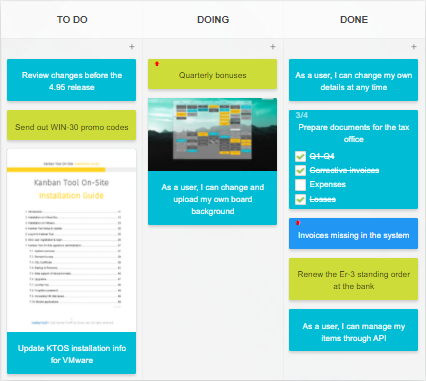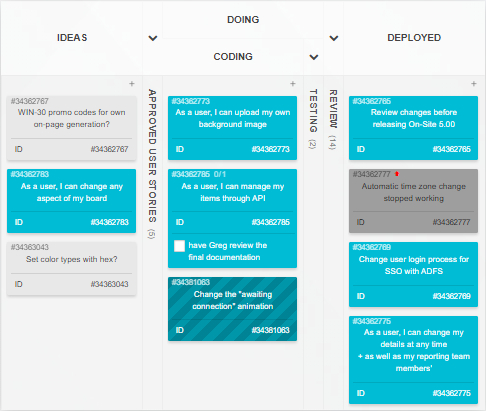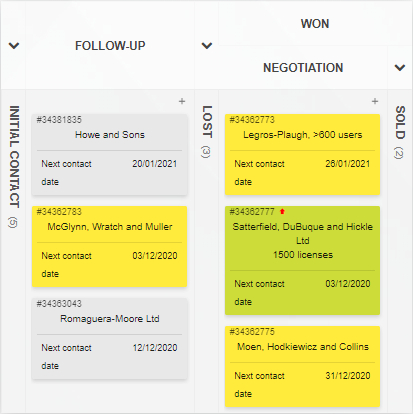What is a Kanban Board?
Kanban Board is a brilliant visual tool that gives an overview of the current work status and simplifies team communication. It's also a key element in the Kanban method, which helps to optimize and continuously improve any business process. Visualizing work on a kanban board will boost productivity and eliminate chaos from your workplace.
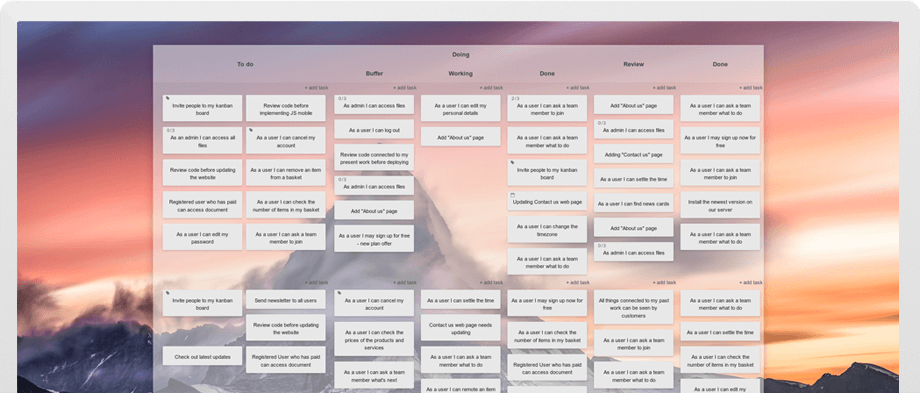
How does a Kanban Board work?
Kanban Boards work by mapping individual work items to sticky notes placed into columns on a large board. Board's columns represent the value stream - a sequence of specific steps that tasks or products must go through from the start of work to finish. Work items are written down on cards and placed into their respective columns.
Different card colors are used for different types of work items, and horizontal rows, known as swimlanes, are used to organize teams working on the same board. A limit is placed on the capacity of some columns to ensure smooth flow of work, and team members pull cards and move them through columns from left to right as work progresses.
How to create a Kanban Board explained in 5 easy steps:
Step 1: Visualize your workflow
To create a Kanban Board, get a whiteboard, then break down the flow of work from the moment you start it to when it's finished into distinctive steps and draw a column for each.
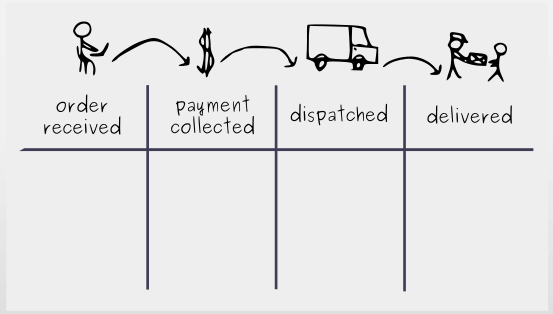
Step 2: Identify the types of work you do
Decide what kinds of work items you are usually working on. These may be, for example, customer orders, support requests, or maintenance tasks. Assign a distinctive color to each of them, and get a bunch of sticky notes in these colors.
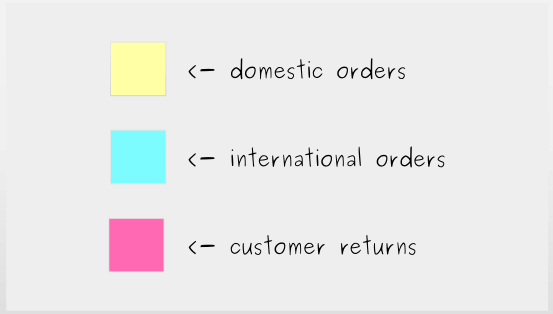
Step 3: Write down tasks on cards and place them on the board
Write down each thing you are working on on a separate color-coded sticky note, and put it onto the board into the respective column. The order of cards in each column should represent their relative priority, with the most urgent ones at the top.
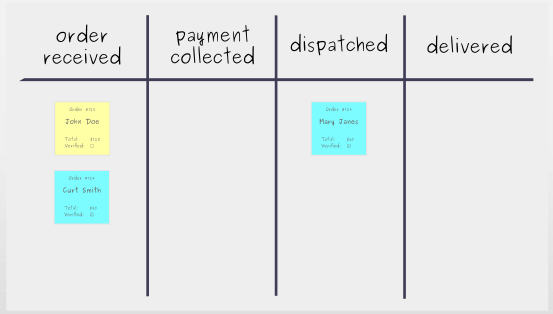
Step 4: Start working with your Kanban board
Work on tasks starting with the ones at the top. When a task is ready to be moved to the next column, place it at its bottom. Such a method of working will help to maintain a high flow of work on your board.
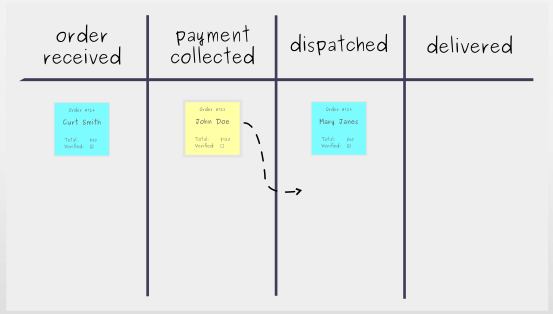
Step 5: Improve the flow of work
Kanban is all about maintaining a high and consistent flow of work. With your board, you should be able to see the overview of work status and instantly identify any problems or bottlenecks. No work item should lag behind, and columns should not be overloaded with tasks. The most straightforward technique to ensure consistent flow is limiting work in progress.
Limiting Work In Progress means placing a limit (WIP limit) on the capacity of a column on a Kanban Board. For example, you may decide that you should not be working on more than two things at once. So once you have more than two items in a column, you stop accepting new ones and focus all your efforts on getting at least one item from this overgrown column done first. Limiting WIP helps to keep in check the number of unfinished things you have on your plate, before accepting new ones. Keep in mind that Kanban Boards are part of a larger Kanban method, which offers many other techniques to keep the work flowing.
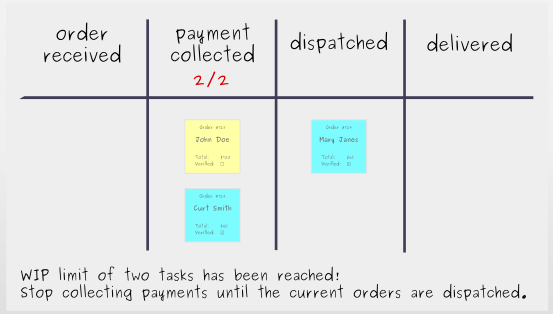
Where did the Kanban Boards originally come from?
Kanban boards' history starts in 1963 on the manufacturing floor of Toyota Motor Company. There, Tachi Ohno has worked on the basic principles of the Kanban method, which included Kanban cards as a visual signal helping to control the flow of parts through the supply chain.
Around 2006, as the Kanban method was gaining popularity, software developers started to apply it to the common practice of visualizing and sharing project status by posting cards on whiteboards in the project room. Application of Kanban principles to the otherwise chaotic project boards gave them the columns and structure from which modern Kanban boards have emerged. Now they are successfully used in all kinds of industries and everywhere where visibility of work status helps to organize work better.
Physical vs. online boards
Kanban boards available online are a natural response to remote teams' needs, and an ideal solution for modern companies, where working from home is a supported standard, either in full or part time capacity. Online Kanban combines the established and valued principles of Kanban, such as Work In Progress limits, with latest technology, helping businesses succeed in highly competitive markets.






